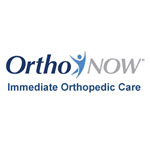It used to be that patients with acute orthopaedic injuries had to either seek treatment in a busy hospital emergency department (ED) or wait several days to get an appointment with an orthopaedic surgeon. Today’s patients, however, demand quicker and easier access to specialized orthopaedic care. As a result, orthopaedic surgeons are increasingly turning to alternative delivery models—such as orthopaedic urgent care clinics—to meet those demands
Like EDs, many orthopaedic urgent care centers are open 7 days a week. But unlike EDs, they have little-to-no wait times. And unlike conventional urgent care centers, patients are seen by dedicated orthopaedic specialists.
“Instead of making a costly trip to the ED—only to be told when they are discharged to follow-up with an orthopaedic surgeon—patients at orthopaedic urgent care clinics receive appropriate care on site. The concept is efficient, cost-effective, and results in more focused treatment,” said Alejandro Badia, MD, chief executive officer and chief medical officer of OrthoNOW®, an orthopaedic urgent care clinic franchise.
Dr. Badia believes that orthopaedic urgent care centers have the potential to revolutionize the way injury treatment is rendered on the front line, and by reducing redundancy of care, they can also have a huge impact on healthcare’s bottom line.
“Physicians in the ED or in general urgent care centers often miss more subtle orthopaedic injuries, and by the time these patients are referred to orthopaedic care, it is often too late to perform the ideal treatment. As a result, that first visit is usually a waste of time and money,” he explained.
A model for maintaining independence
Another reason for the surge in orthopaedic urgent care centers is the desire by physician practices to remain autonomous.
“In our community, as with others throughout the country, it is increasingly difficult to remain independent of hospitals and secure and sustain a quality referral base,” said David E. Hassinger, MD, of Direct Orthopedic Care (DOC), an independent orthopaedic surgeon-owned urgent care center in Boise, Idaho.
“It was abundantly clear that we needed to do something significant to ensure we could adequately bill and receive the highest rate of reimbursement,” Dr. Hassinger said.
Since opening in 2014, DOC has been a win-win for patients and physicians. Patients appreciate the fast, quality care they receive, while physicians welcome the new patient stream.
“We’ve found that most patients really understand what we are trying to achieve and adapt to the model very well; they are excited to have an alternative to the ED,” he said.
More often than not, according to Dr. Hassinger, orthopaedic patients leave the ED with a splint and a referral—usually to a specialist of the hospital’s choice. “Now they have direct access to the specialists they need, shorter wait times, and a less expensive bill.”
He added, “Ninety-three percent of the patients we see at DOC are insured. In addition, the types of injuries we treat now—ACL, meniscus, rotator cuff, as well as fractures—are bread-and-butter orthopaedic cases that we didn’t have access to before because patients were referred to hospital-employed physicians.”
Taking a different approach
Although DOC is staffed by orthopaedic surgeons all day, every day, many orthopaedic after-hours centers attached to orthopaedic practices are staffed by an orthopaedic physician assistant (PA), with orthopaedic surgeons on call. (See “An Emerging Emergent Clinic: It’s All About the Patient,” AAOS Now, May 2009, and “Orthopods in the Night Pod,” AAOS Now, January 2012.) When Pacific Coast Sports Medicine in Los Angeles opened its walk-in orthopaedic care center 3 years ago, it was staffed by three orthopaedic surgeons who worked on a rotating basis.
“Originally, we thought this would drive more patients to the practice. But we soon found out that for two of our providers, this wasn’t a cost-effective approach—they were getting paid terrible contract rates,” said Thomas J. Grogan, MD, who runs the facility with Walter R. O’Brien, MD, and Babak Samimi, MD.
That’s when Pacific Coast shifted its business model to a non-contracted one in which patients pay a set fee upfront. The fee includes an office visit by one of the three orthopaedic surgeons, radiographs, and a primary intervention such as a sling, splint, or cast. Patients with out-of-network benefits can then bill their insurance companies.
Dr. Grogan likens the business model to Uber, the online transportation network that connects riders and drivers. “It’s very transparent—patients know going in that they’ll pay a set price with a credit card when they make their appointment,” he said. “The decision is completely theirs: Do they want to spend 2 hours or more in the ED or be seen immediately in the walk-in urgent care center? Most of the patients in our area choose urgent care.”
According to Dr. Grogan, the newer model is a much more effective option for both patients and physicians.
“Our approach to urgent care is a little different—it is closer to orthopaedic primary care,” he said. “We have had tremendous support from patients, especially with increasing insurance deductibles and co-pays. Additionally, physicians who normally have contracts can take advantage of the fact that patients are willing to pay a little bit more for convenience.”
Maureen Leahy is assistant managing editor of AAOS Now. She can be reached at leahy@aaos.org
AAOS Now
August 2015 Issue
http://Read Full Article »









Leave a Reply